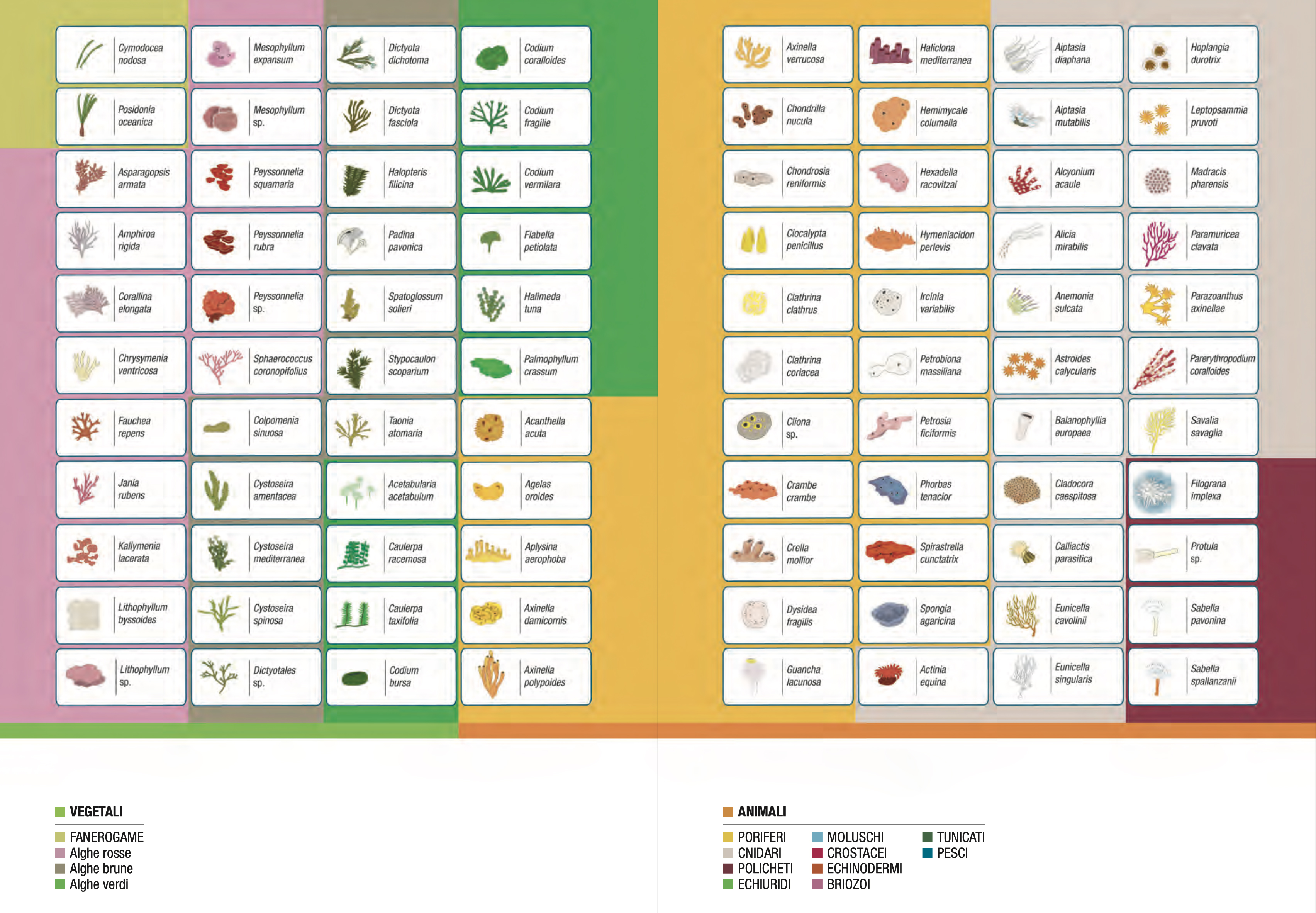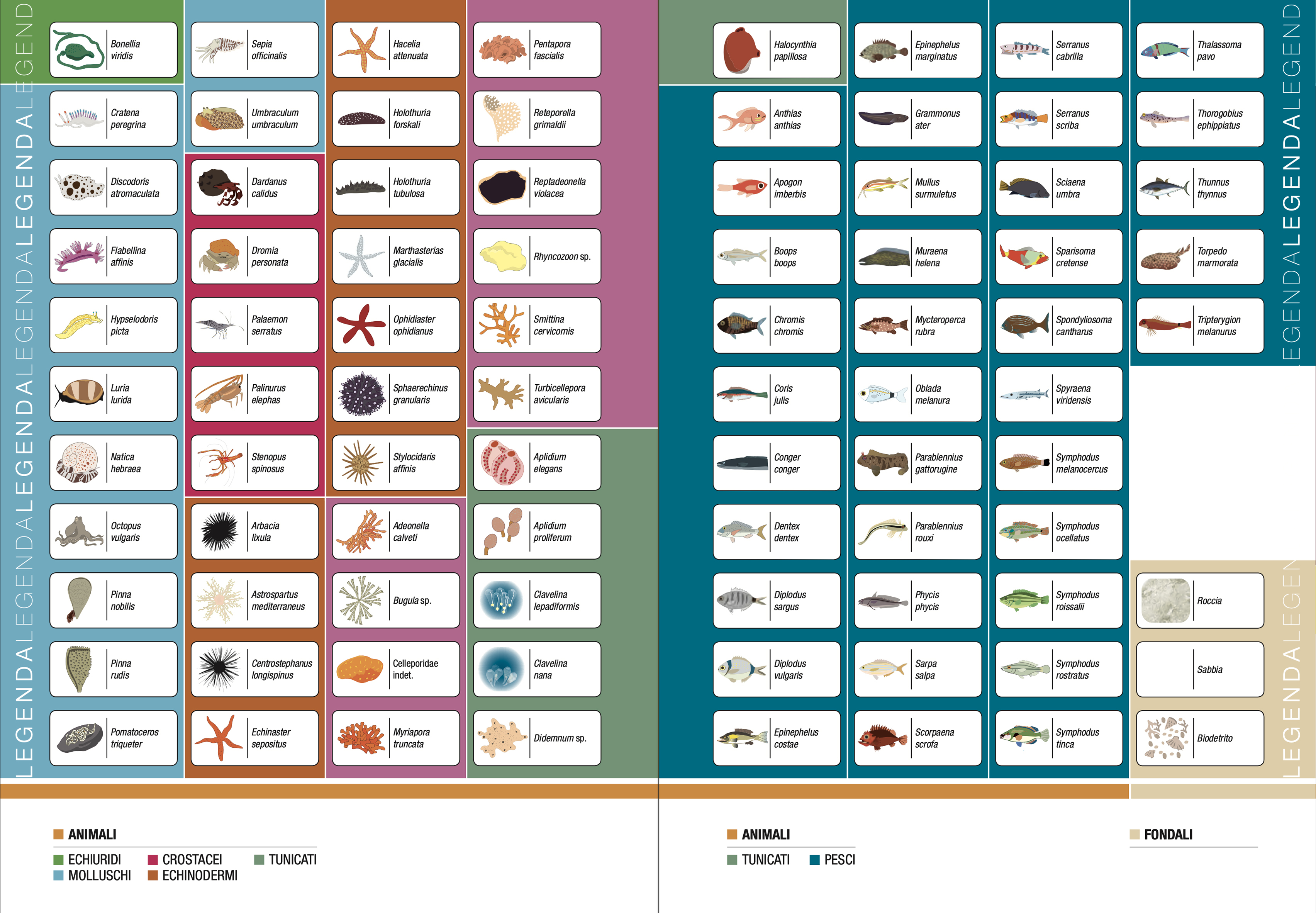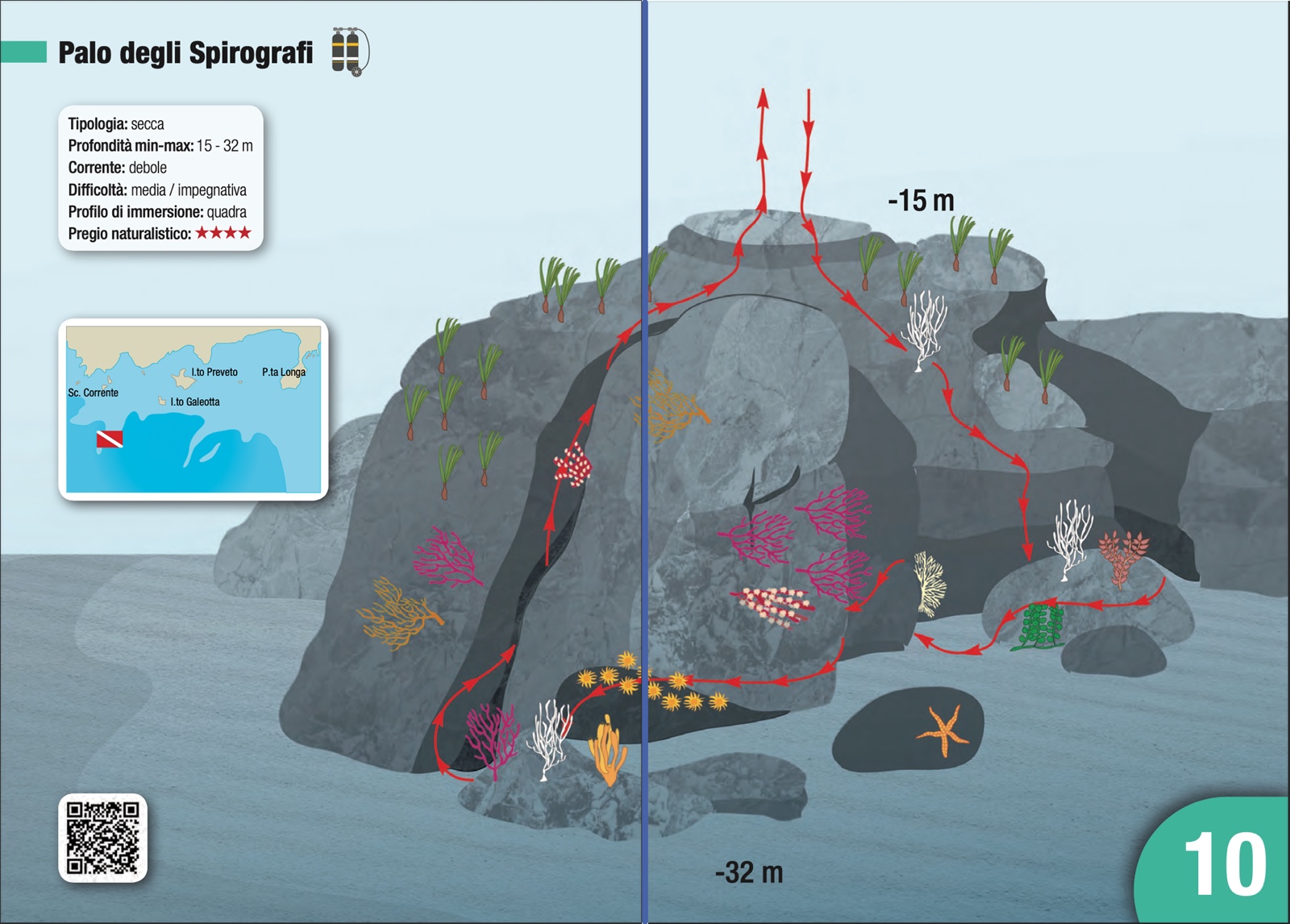Site 10 - Palo degli Spirografi
It is a beautiful shoal, one of the rocky reliefs characteristic of the southern seabed of the island of Favignana and known as 'I Pali', with a 15 m depth top and a rich vegetation cover. There is Posidonia oceanica and a rich algal layer (Dictyotales spp., Caulerpa racemosa, Sphaerococcus coronopifolius, Stypocaulon scoparium, Padina pavonica), with abundant colonies of the white gorgonian (Eunicella singularis). In addition to colourful nudibranchs (Flabellina affinis, Cratena peregrina), perch (Serranus cabrilla) and the banded seabream (Diplodus vulgaris), there are specimens of spirographs (Sabella spallanzanii) at the top, which can also be found at depth. At 20 m, the south-facing side of the shoal consists of beautiful vertical walls rich in ravines and small cavities with large, dense fans of red (Paramuricea clavata) and yellow (Eunicella cavolinii) gorgonians, on which bryozoans (Pentapora fascialis, Turbicellepora avicularis) and tunicates (Clavelina lepadiformis) find substrate. Also present is the alcyonaceous Parerythropodium coralloides, which colonises the numerous gorgonian branches that characterise the erect layer of the wall. The layer below is rich in colour, with bright green algae (Palmophyllum crassum) criss-crossing the rock together with large patches formed by pink-orange sponges (Hexadella racovitzai, Spirastrella cunctatrix). In the small crevices, it is possible to see lobsters (Palinurus elephas), urchins with long spines (Centrostephanus longispinus), and the red alcyonium acaule with white polyps. At the foot of the wall, between 28 and 30 m depth, large shaded cavities host colonies of branching (Smittina cervicornis) or cup-shaped (Hornera frondiculata) bryozoans. There is no shortage of yellow sponges (Clathrina clathrus), flowering ascidians (Botrilloides sp.), while red scorpion fish (Scorpaena scrofa) and swarms of red mullet kings (Apogon imberbis) and brown (Chromis chromis) and red (Anthias anthias) make up the fish fauna. On the sandy bottom at about 32 m there are collapse boulders on which the candelabrum branches of the yellow sponge (Axinella polypoides), white and red gorgonians stand out. Among the algal component (Asparagopsis armata, Codium bursa, Caulerpa racemosa) the star Hacelia attenuata can be found.
Legenda:


-
Information
-
Contacts
